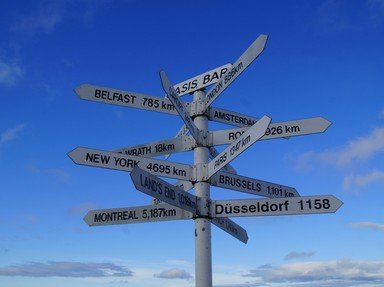Quiz Answer Key and Fun Facts
1. Le Pont Neuf (the New Bridge), which was built between 1578 and 1607, is paradoxically the oldest standing bridge across the River Seine in which City of Lights?
2. Which of these New places is a region rather than a state in the U.S.?
3. The French dependency of New Caledonia in the western Pacific and the Canadian province of Nova Scotia are both named for which country in the British isles?
4. Known as the birthplace of Jazz, New Orleans on the Gulf of Mexico is one of the most historic cities and most important ports in the United States. What mighty river is vital to the city's commerce and tourism?
5. New South Wales is a state in Australia. Has there ever been a New North Wales anywhere in the world?
6. Which British university has a New College, founded in the remarkably recent year of 1379?
7. From the early eighteenth century until independence in 1980, the South Pacific island nation of Vanuatu was a European colony known as the New Hebrides, held jointly by Britain and France.
8. Which statement correctly describes Papua New Guinea in the southwest Pacific?
9. The New School is in fact new, relatively speaking, having been founded in 1919. To which world city would you travel if you wanted to study at this innovative university that was the first to offer college level courses in African-American History, Anthropology and Jazz?
10. New Zealand is an English-speaking country, part of the British Commonwealth. What is the native language of the country or region for which New Zealand was named?
Source: Author
Catreona
This quiz was reviewed by FunTrivia editor
Tizzabelle before going online.
Any errors found in FunTrivia content are routinely corrected through our feedback system.


